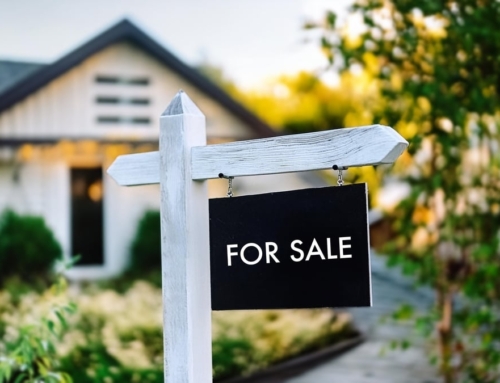This is a mistake you don’t want to make.
Several months ago, I was approached by someone in my neighborhood who offered me the opportunity to buy his property before he listed it.
If I didn’t buy it with three days, he was going to put the property on the market. He made the same offer to another neighbor.
It was a high-pressured, somewhat unfriendly tactic, I thought. But when I opened the envelope, my eyes popped.
The price he was asking for the property was several hundred thousand dollars more than any other similar property had sold for in the neighborhood. You read that right: several hundred thousand dollars more.
My first thought was, “Wow. I wonder what my lot is worth.” My second thought was, “Who is he kidding?”
In addition to being on a somewhat busy street, the owner’s property is also somewhat narrow and is considered a “non-conforming” lot.
In other words, the property doesn’t conform to current zoning standards because it is narrower than the minimum footage permitted for new construction.
To developers, this “non-conformity” might required jumping through several hurdles in order to build the kind of house on the property that someone with a lot of cash would want to buy. Going through a zoning committee typically adds extra expense and time to the development process. Worse, if you don’t get the changes you are requesting, you may be stuck with an overpriced property and not able to build the home on the site that you would have needed to build to make the purchase worthwhile.
To homeowners, if your lot is “non-conforming,†it may mean that it won’t appreciate as quickly as other lots that do conform to current
zoning standards. It may depend on your non-conformity, but if all the lots in your neighborhood are similarly sized and yours is significantly
smaller, the lot may be much less (perhaps exponentially less) desirable.
After careful consideration, my husband and I declined to make an offer on the property. I didn’t want to insult the owner, but knowing what lots were actually selling for in the area, I couldn’t see any way that we could make what he would consider to be a reasonable offer. Apparently, he couldn’t make a deal with anyone else he approached.
Three days later, I watched for a sign to go up on the property. Nothing happened, so I assumed our neighbor had decided to stick around for awhile.
Wrong again. This weekend, a “for sale” sign went up on the property. And the list price? A full one hundred thousand dollars less than
the price I was offered three months earlier!
For those of you keeping track at home, that means the property is still listed about $100,000 more than I think it’s worth. That doesn’t mean someone won’t buy it, by the way. It just means I won’t be signing the offer for purchase.
Why was this such a terrible seller mistake? Doesn’t everyone want to try to get as much money as possible for the sale of his or her single
largest asset? Is there anything wrong with “testing” the market to see if the property can command a higher price?
Part of the problem is that you can’t time real estate markets (or stock markets for that matter). When the owner of this property first
offered me an opportunity to buy the property, it was mid-March, when residential real estate markets were beginning to soften. Short-term
interest rates had gone up significantly, but long-term mortgage rates were hovering around 6 percent.
As we head into July, the market has continued to change, and is now favoring buyers. Mortgage rates have risen to more than 6.75 percent. Home equity loans and lines of credit are now at or over 8 percent. Housing affordability is at a 20-year low.
Buyers are firmly in control in many parts of the country. In most of the country, home sales have slowed down, and appreciation has leveled off. We’ve had three more months of super-high gas prices, in which time consumer confidence has fallen and inflation has begun to sprout. Ben Bernanke, chairman of the Federal Reserve, has said there are signs the economy is slowing.
By overpricing his property initially, the owner has lost three valuable months of selling time — time in which the market has shifted some more. He has come to realize that his property was at least $100,000 overpriced. But if he wanted to sell quickly, he should have lowered the price even further.
Another mistake the owner made is that he bet we would be willing to overpay for the property, either because we didn’t know what was really happening in the neighborhood or because we would be ruled by emotion.
But it’s easy to get a good idea about how much property is worth. You can look up sales of comparable property (“comps” in the real estate world) by looking at local county websites, which often lists information like this on their websites. Or, you can go to websites like Zillow.com, HouseValues.com, or Domania.com and figure it out yourself.
Or, you can call a local agent who will be delighted to fill you in. We called the agent who has represented us in the purchase of other investment properties. She was a walking encyclopedia of knowledge about what properties in the area had sold for how much in the past years. Off the top of her head, she quoted us sales prices and listing days for a variety of comparable properties.
The worst part of this whole mess is that once you get it in your head that your property is worth a certain amount, it’s tough to take less.
And that’s why overpricing your property is such a painful mistake to make: If the owner had listed his home for sale last year at the price he wanted, he might have gotten it.
But real estate markets change on a dime and he is slowly, and painfully, coming to see that this year’s price might be a whole lot lower.
June 22, 2006.






Leave A Comment